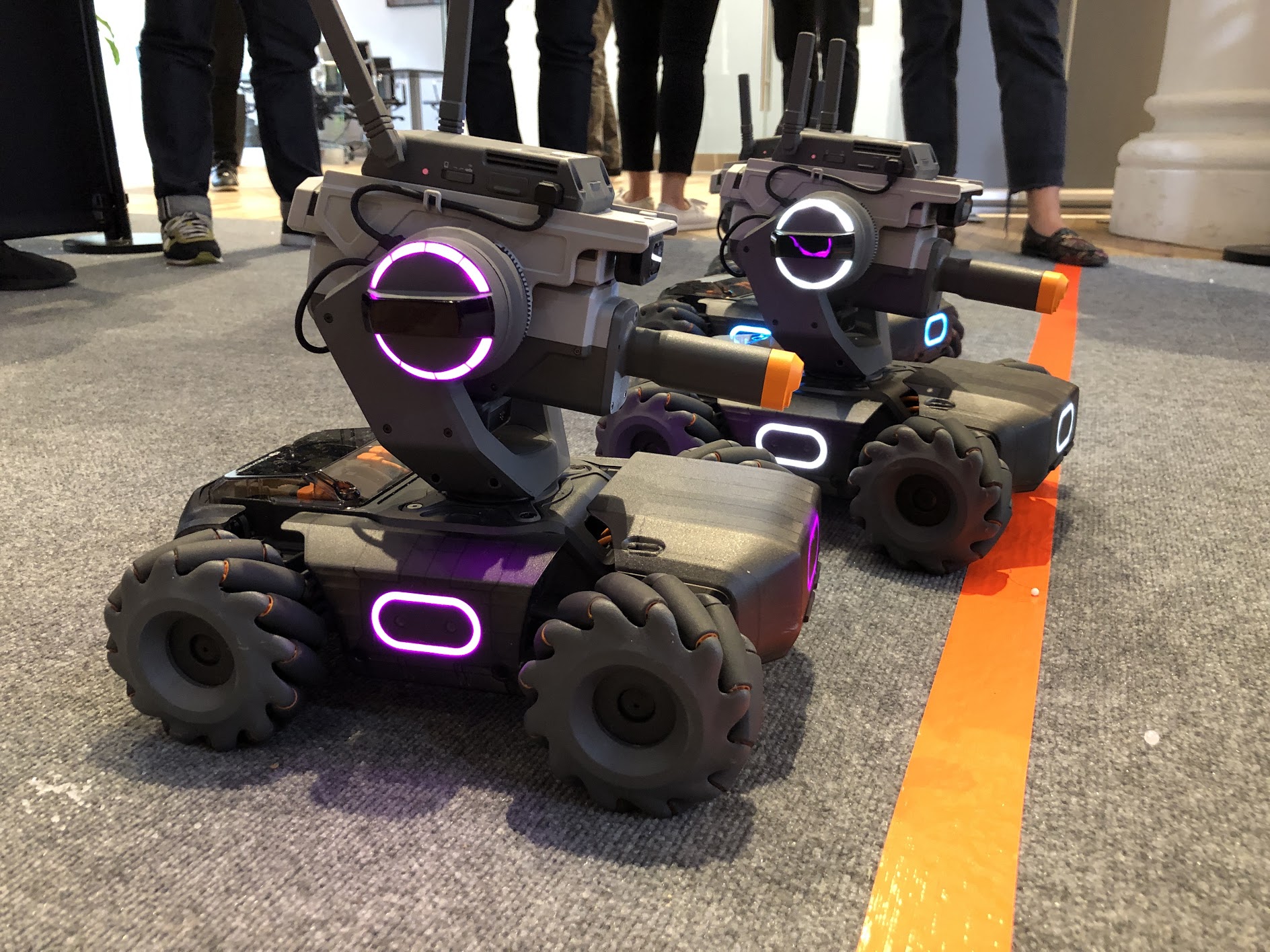


When it comes to consumer-grade aerial drones, no one does it better than DJI. But the company designed its latest robot not to fly around the sky, but to cruise around on the ground. The DJI RoboMaster S1 has four burly wheels and a rotating turret on top. It looks like a scaled-down version of something that a glistening Duane Johnson would drive around in a future Fast and Furious movie. I got a chance to drive a pre-production version of the RoboMaster S1 and—while my driving skills were about on-par with those of a bored toddler mashing the controls with reckless abandon—it was a lot of fun.
Robot vision
The RoboMaster S1 ships completely disassembled and takes an hour or two of work before you can drive it around. That assembly process is part of what makes it an engineering toy right out of the box. The product draws its inspiration—and its name—from the RoboMaster robotics competitions that DJI has been putting on since 2013.
Once together, the S1 works a lot like a ground-based drone. Drivers use a smartphone app to guide the vehicle by way of a live video feed that comes from an onboard camera. That part is similar to the setup of a drone like the company’s Mavic or Phantom lines. There’s also an optional accessory controller with an analog joystick coming later this year that makes operation a lot easier.
Manual controls are fun, but they’re optional. The camera, like the one in a flying drone, gives the S1 the ability to lock onto a subject and follow it like a little robotic puppy. It can also follow a line along the ground or follow a programmed path that the driver inputs using code.
The camera will capture HD video footage, but unlike most aerial drones, that’s not its primary function.

Follow the code
Because of its hardcore robotics competition lineage, the S1 offers some substantial coding features, including integration with Python and its entry-level sibling, Scratch. There’s a natural progression in terms of coding, so users can move up though easier visual coding with Scratch and then progress into text-based Python, which is a familiar path with high-end STEM bots.
The coding does allow for some nifty tricks. Its audio sensor makes it so you can clap to start and stop the vehicle if you want to do so. You can also program specific automated maneuvers like figure-eights that happen with a single command or input.
The code also works in conjunction with the camera, so if you put up visual signs that come with the package, the camera will recognize them and take commands like reversing directions or adjusting speed as it goes.
Is it fun?
The real test of a stem toy, however, is whether or not it’s actually fun to play with once it’s assembled and you’ve gotten sick of making it follow a line around on the floor.
The S1 has a full-on turret that shoots beams of light as well as plastic beads that you have to soak in water before you load. Using the turret, you can play what’s essentially a game of laser tag against other S1 robots. I got to play it and, while I was not good at it, it is fun. The addition of the plastic beads, however, seems odd. The laser tag mode is plenty satisfying without having to buy tiny plastic beads.
The racing modes are fun, especially since there are augmented reality aspects of it. If you point the camera at a specific card with a graphic on it, for instance, you can get a power-up that will affect the other robots against which you’re competing.

The confusing bits
At $499, the S1 feels like it’s worth its price when you use it. However, some of the most fun aspects of it require several of them to battle against friends, and that gets pricy quickly. I also can’t see buying more beads to shoot out of the cannon very frequently if only because spraying plastic all over the place is unnecessary to make it fun. But the overall experience is enjoyable. The top speed of 8 mph is as fast as it needs to go, and the wheels allow it to move in interesting ways like strafing sideways or turning on its own axis.
I fully expect DJI to get more into this space and I wouldn’t be surprised to see more of this coding tech creep over into flying-drone territory.